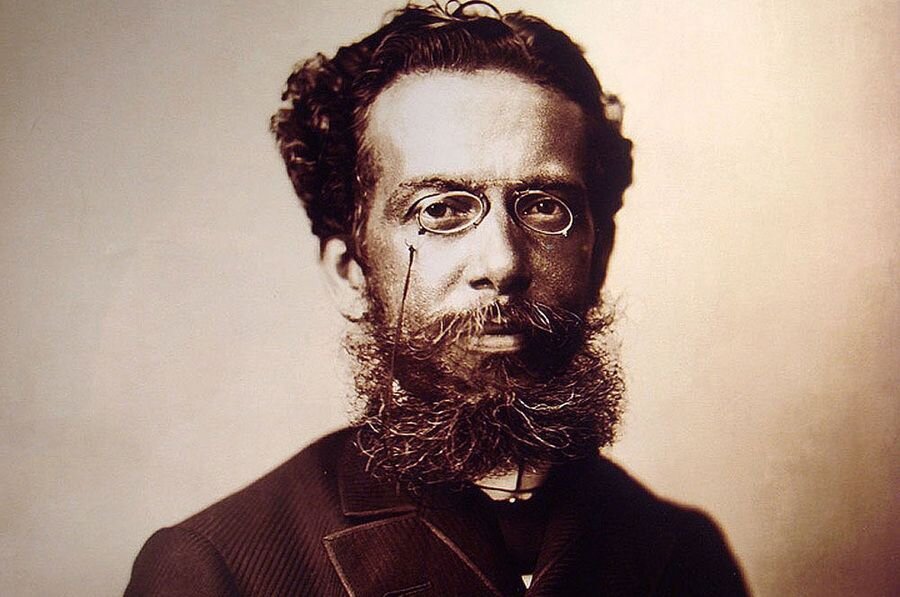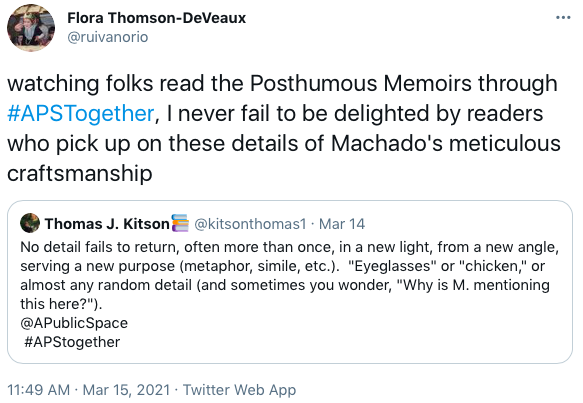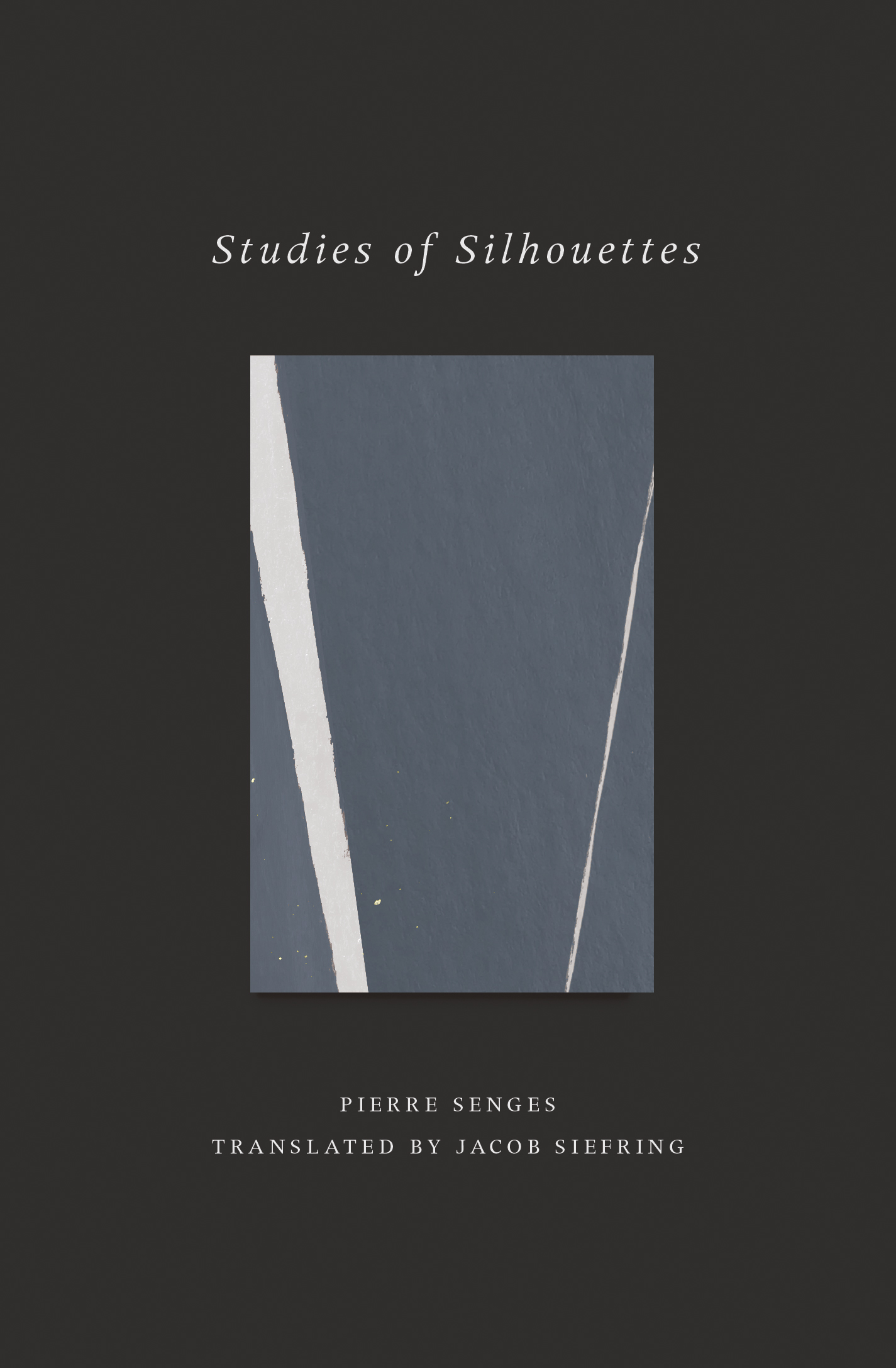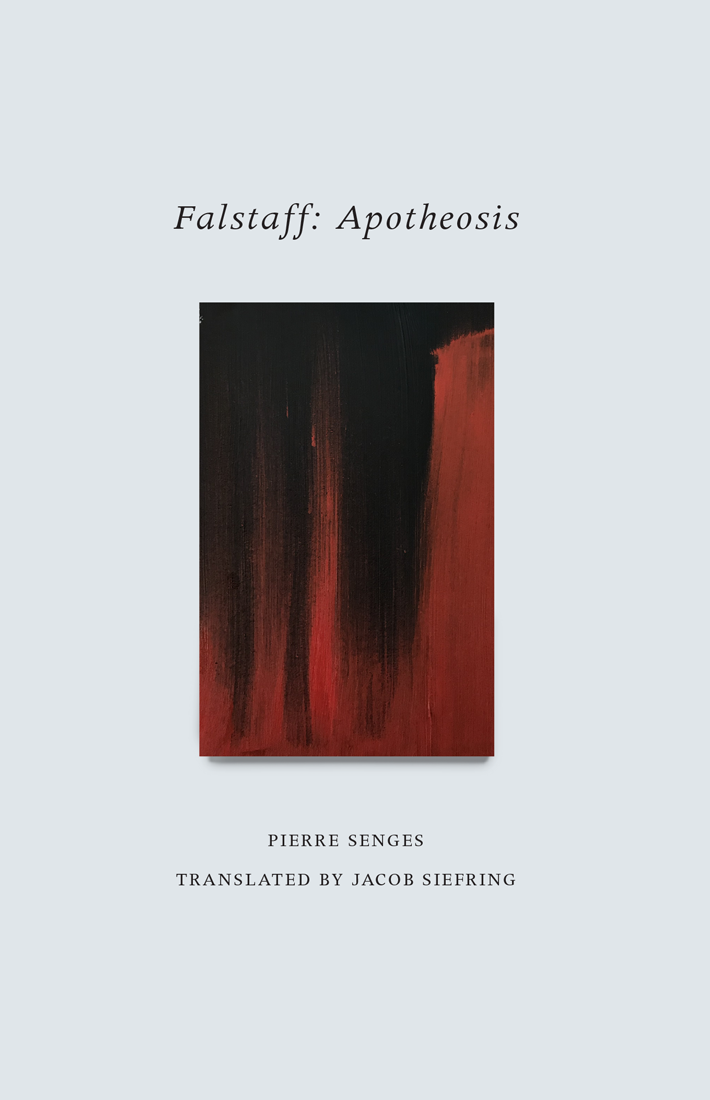Isaac Lang is born. Yvan Goll is reborn.
Ode to gift of free copy! I had a poem in this year’s Asheville Poetry Review, which brought some fantastic resonance into my mailbox, particularly Keith Flynn's review essay, "The Remaining Mystery: A Review of Yvan Goll's Selected Poems," which outlines Goll's life in the context of his oeuvre, and includes new translations of Goll’s poems.
Yvan Goll was born Isaac Lang in the borderland of Alsace-Lorraine, a contested space, a borderland of languages and ethnic affinities. After studying law and philosophy in Berlin, Goll became part of the new wave of German expressionism that flourished in Berlin before the War.
In his Expressionist phase, Goll befriended Lasker-Schuler, Hugo Ball and E. Hennings. When the First World War broke out, Goll’s commitments as a socialist pacifist led him to seek refuge in Geneva, Switzerland in 1914, to avoid being conscripted into the German army.
The spirit of the time encouraged self-discovery, which is to say, it demanded a certain self-definition as new identity claims (political, social, artistic) entered the discourse. Goll called himself "Jewish by destiny, French-born by chance, and designated German by a stamped piece of paper." He worked across mediums, writing poetry, plays, and even "an emotional surrealist film", Die Chaplinade (1920) — which I imagine Mihai Sebastian must have seen or heard about prior to the lecture he gave on Charlie Chaplin at the Criterion event in Bucharest.
In his flurry of finding the right name, Goll used two pseudonyms with the first name Tristan; it wasn't a popular name at the time, and so, to me, it suggests a sort of limning of Tzara, a marker that Dada was near.
But— one cannot tell a story about Yvan’s life without centering the woman who laid herself in the heart of it.
Klara Liliane Aischmann Studer Goll, or Claire Goll, as we know her.
Claire Goll (a.k.a. Liliane).
Klara Liliane Aischmann was born on October 29, 1890 and raised in Munich, the second child of a wealthy, assimilated German-Jewish family: her mother, Malvine, came from a family of bankers, and her father Joseph was a trader in hops, acting as the Argentinean Consul.
Claire married publisher Heinrich Studer, and gave birth to a daughter, Dorothea Elisabeth, her only child. But World War I was on the horizon, and Claire decided to emigrate in protest of this war. She wound up in Geneva at the beginning of 1917, among revolutionists and peace activists, studying psychology and contributing to newspapers and pacifist publications.
Chronologies dispute the dates associated with 1917 and 1918 in Claire’s life, and it’s difficult to reconcile them across sources, but many sources claim Claire first met Ivan Goll on February 10, 1917 in Geneva. They maintained an epistolary romance which included, according to some, a promised engagement in 1917, depending on who owns the chronology.
Claire and Studer divorced in late 1917, the same year, she met Yvan Goll, and a year after her emigration. Although the suburbs of Studer’s infidelities were vast, it was Claire’s affair with Kurt Wolff that served as the legal reason for which she lost custody of her daughter, who was sent to Zurich to live with Studer’s parents. (According to sources, Claire and her daughter never developed a close relationship.) But Claire went back home to resolve the divorce, and then met up with Yvan in Geneva in 1918.
At the end 1918, while in a relationship with Goll, Claire had an dalliance with Rainer Maria Rilke. Claire was crossing frontiers, and she heard Rilke was opening his residence and life to left leaning artists. They became lovers for what appears to be a matter of weeks, at a time when Rilke was also nurturing a two-month-fresh epistolary romance with Elya Nevar.
In a note, Rilke told Claire to come and visit him the same day. Claire answered at once. She had come to Munich to make contact with Rilke, she was determined to resist the pressure for marriage from Yvan. In her memoir, she describes stopping at Paul Klee's apartment, next door, to gather up courage to meet the famous poet. She found him to be a fragile man with luminous blue eyes and a mustache. She was impressed by his apartment furnishing.
For Claire, Rilke was the "romantic" aesthete whose anti-war position came only in the face of defeat and revolution. In a sense, Rilke's politics was always aesthetic – and one sees this also inflects his later reverence for Mussolini's speeches and voice.
Unlike the world-of-two Nevar described with Rilke, Claire's memoirs are acutely aware of other presences in the rooms of Rilke's life. Ralph Freeman qualifies:
Claire's imagination constantly focused on others in the background. When she mentioned his reclusiveness, she also suggested that his protected in was literally beleaguered by women.
Rilke’s nickname for Claire was Liliane —this was a time when noms de guerre or secret names held a certain frisson ing artistic circles, as they indicated an underground life, so having a nickname, or a private name, points to the increasing proximity between politics and aesthetics during the interwar period— and the fact that Liliane was Claire’s middle name suggests the presence of childhood in their relationship, or in the way they wanted to perceive one another. Middle names, after all, are intimate, known only to family, and usually it is one’s parents or relatives who use those names, and evoke those names. There’s something innocent about a middle name, something private behind a garden wall with heirloom roses.
In her memoir, Claire extolled Rilke’s omelettes, his aristocratic grace, his tenderness (which she interpreted as a form of self-protection). She described his request that she perform for him the dance of the seven veils from the Arabian Nights, and the experience of being devoured by his eyes.
In one of three passionate letters to Liliane, Rilke posited that a true seduction lasts four days. So she moved in with him. But he did not write during that time. She link this to crashing, or being overwhelmed by social life; Rilke seemed divided between aesthetic and political responses to the war.
According to Claire’s telling, it was when Rilke started receiving phone calls threatening him for housing a dangerous Bolshevik that Claire made plans to move. She left in December; Yvan had been wooing her in letters throughout. But Rilke was on a list of writers to watch. And Liliane kept trying to connect with her Berlin friends and Rilke until the revolutionary govt there was overturned by Hindenberg.
From Charles Freeman again:
In early February, feeling vulnerable, Claire took off for Switzerland and Ivan Goll. If her memoir is to be trusted, she found herself pregnant with Rilke's child. When she confronted Rilke with this discovery, he had just been buoyed by the news from the Insel-Verlag that despite the heavy political weather his books were moving well....
According to Claire, who remains the only witness of her own pregnancy, Rilke and Goll engaged in a lengthy exchange of polite letters. Neither man wanted the responsibility of a child, so Claire underwent an abortion. After their extremely courteous epistolary dialogue, the two men agreed to destroy each other's letters. Rilke continued to maintain a friendly if somewhat distant relationship with Claire, who he continued to call Liliane, before and after her marriage to Ivan.
As for Rilke, himself, he despised the call to the front; despised the uniform; despised his job at the Viennese archives which required him to produce a current history of the war, which he likened to "hero grooming," the propaganda of verbal monument-making to assist in the war effort.
Words could be statues for Rilke, and the embellishment of military exploits were not statues he wanted near his name. Freeman maintains Rilke wasn’t politically a “conscientious objector publicly acting from pacifist convictions but rather an artist acting from a strong belief that he was a cultural monument."
In wartime Vienna, Rilke's circle included the recently-wounded Oskar Kokoschkca.
In 1918, Claire published two books: a poetry collection, Mitwelt, and a novella, Die Frauen erwachen.
From Yvan Goll’s Four Poems of the Occult, published by Jacob Quinlan Books.
Yvan and Claire in Paris, before and after exile.
Yvan and Claire moved to Zurich and Ascona before settling in Paris in November 1919.
Despite turbulence and infidelity on both sides—including Claire’s affair with Rainer Maria Rilke, by whom she claimed to have been pregnant—Goll remained the focus of Claire’s life until his death from leukaemia in 1950. Thereafter she devoted herself to maintaining and promoting her husband’s memory with unflagging (but often editorially unreliable) publications and re-issues of his work.
The two married on July 21, 1921, on the same day as the launch of the Eskimo Pie, originally called the "the I-Scream-Bar". In Russia, the Civil War continued, and the Soviet ship Sawa was shelled and sunk by the Soviet submarine Trotsky in the Black Sea while trying to defect to the Whites. The vessel and most of her crew were killed. Four men were rescued and imprisoned. On this same day in Yugoslavia, Serbian politician and Minister of Internal Affairs for Yugoslavia Milorad Drašković was assassinated by a member of the Yugoslavian Communist Party. The killing, coupled with the June 29 attempt on the life of Prince Alexander, prompted the passage of the Law Concerning the Protection of Security and Order in the State" eleven days later.
Yvan loved Paris, loved its surrealist circles, loved the churn of aesthetics rubbing shoulders with history. In 1924, Goll published his own Surrealist Manifesto in opposition to Andre Breton (whom he thought relied too much on Freud and automatic writing).
Goll's work was blacklisted by the German government, and poet Paula Ludwig posed a challenge to the Golls' marriage. Others have written about this.
When France went Nazi in 1939, the Golls fled to New York, where they would remain until Gall got sick with leukemia (the same illness which killed Rilke) near the end of his life and returned to France for treatment. Optimistic by temperament, the rise in global nationalism bothered Goll, and this unrest shaped his poetry, which moved across borders and countries, bearing witness to greed, which he considered the primary force of destruction on the planet.
Buried in Pere Lachaise, near Chopin, Goll’s bones lay within walking distance of Paul Celan’s. In Goll's final years, Celan was frequently at his bedside, donating blood to help him survive leukemia, and trying to help him finish his last manuscript, Dreamweed.
The Goll Tomb at Pere Lachaise. To die in one’s chosen name, as the persona one wrote, rather than the Lang one was born. The 20th century began.
After 20 years in the United States, Goll had "returned to the German language" seeking, again, a relation with unbidden, ineffable things in the key of dread, in the pulse of surrealism, in what Flynn calls " incendiary images" that might uncover something solid and monumental to leave as testament. In a sense, it was a gift for Claire, a reward for the years of companionship and support that she provided, a poem to bind them together after death.
Flynn doesn't mention the Goll affair in this review at all, an interesting elision. But Flynn does something else wonderful: he references Walter Benjamin's 1929 essay on surrealism, "The Last Snapshot of the European Intelligentsia”, which traces the surrealist's edge-narratives alongside the tensions inside the artistic movement, noting: "the true creative overcoming of religious illumination certainly does not lie in narcotics. It resides in a profane illumination, “a materialistic, anthropological inspiration, to which hashish, opium, or whatever else can give an introductory lesson”— but a dangerous one; and the lesson offered by religion is stricter.
For histrionic or fanatical stress on the mysterious side of the mysterious takes us no further; we penetrate the mystery only to the degree that we recognize it in the everyday world, by virtue of a dialectical optic that perceives the everyday as impenetrable, the impenetrable as everyday. The most passionate investigation of telepathic phenomena, for example, will not teach us half as much about reading (which is an eminently telepathic process), as the profane illumination of reading about telepathic phenomena. And the most passionate investigation of the hashish trance will not teach us half as much about thinking (which is eminently narcotic), as the profane illumination of thinking about the hashish trance. The reader, the thinker, the loiterer, the flaneur, are types of illuminati just as much as the opium eater, the dreamer, the ecstatic. And more profane. Not to mention that most terrible drug, ourselves, which we take in solitude.
Italics, here, are mine. I love that statement. It keeps me company in the way ordinary life with humans who don’t want to talk about books cannot.
Benjamin rejects the assumption that drugs are required for surrealism, and drops a small bomb at Lenin's feet by suggesting that Lenin brought drugs and religion closer than anyone. In this distance, Celan and Benjamin stood in aesthetic counterpoint to Goll.
Translated by Donald Wellman, available at Asymptote.
The Goll Affair
I have loved a few men and more than a few have loved me, but it was not until I reached seventy-six that I had my first orgasm.
These words for Claire Goll’s posthumously published memoir, Ich verzeihe keinem (I Forgive No-one), should be appreciated for the ribald honesties they offer. Claire’s writing never strayed from the sexual, and from clarifying the importance of eros in the female life. I appreciate this aspect of her voice.
But the Goll Affair is more complicated — it is complicated not just by the charge of plagiarism that Claire launched against Paul Celan, but also by her memoirs, which she published after his death, alluding to Celan’s attempt to rape her.
It is complicated by Claire’s assertion that Celan killed himself out of fear this information would be released —and that she chose to publish this information after he was dead, and could no longer defend himself.
It is complicated by the extent to which a writer’s depression and trauma become vehicles for posthumous alienation by those who outlive them, and who would like to imagine themselves at the heart of a story which does not belong to them.
This deserves another post….
*
Robert Vilain, “Claire Goll”, Jewish Women’s Archive. + Ralph Freeman, Life of a Poet: Rainer Maria Rilke. + Rennette Watson, “Yvan Goll: Between Expressionism and Surrealism”, The Grandma’s Logbook.



















![Cubas atop the donkey—though the muleteer is missing. From Mariana Rio’s illustrations for Memorias Póstumas de Brás Cubas published by Editorial Sexto Piso. [Source]](https://images.squarespace-cdn.com/content/v1/5aea0d8696e76f6ac6f09e3c/1616020838918-CFGHQWYZQ4CI1RCFR42W/Screen+Shot+2021-03-17+at+5.39.48+PM.png)











